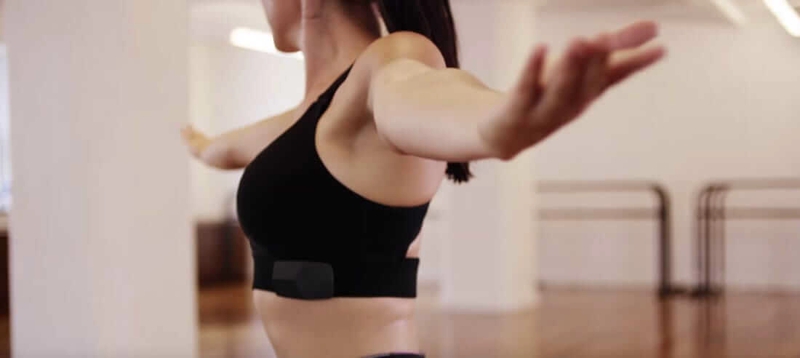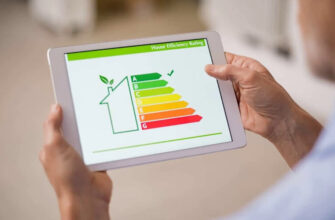Today, clothing is primarily supposed to be fashionable and look good. But in the future, smart clothes or e-textiles, as intelligent clothing is also called, could play an increasingly important role. Sweaters and jackets would then, for example, act as a powerbank alternative to charge your smartphone or record your vital signs. Here you can read what smart clothes are exactly, what they can do and what else may be possible in the future.
- What are smart clothes?
- What processes are used in the production of smart clothes?
- Are smart clothes suitable for everyday use?
- Smart clothes: What is already possible?
- Smart clothes in everyday life
- Smart children’s clothing
- Smart sportswear
- Outlook: What else is coming in smart clothing?
- Smart Clothes: From technology trend to everyday product
What are smart clothes?
Wearables such as smartwatches, fitness trackers and sensors for better posture have long since become part of everyday life. It’s high time that clothing also became smart. So-called smart clothes, for example, are equipped with sewn-in sensors that allow them to collect data and/or trigger actions.
Alternatively – or additionally – smart fibers and conductive yarns are used to make smart pants, sweaters and the like. They integrate the digital functions directly into the fabric, which is why smart clothing is also known as e-textiles.
To make it all work, a wide variety of experts collaborate in the production of smart clothes. In addition to materials researchers, fashion and textile designers, electrical engineers, computer scientists, interface designers, clothing technicians and artificial intelligence specialists, among others, are involved in developing and improving smart clothing.
What processes are used in the production of smart clothes?
All of these experts are working to integrate technical components such as solar cells, batteries, touchscreen elements and more into the fabric in such a way that they can perform their functions as unobtrusively as possible and without causing a disturbance.
Despite all these advanced technologies: Conventional processes are primarily used in the manufacture of smart garments. The smart fibers are woven and knitted together with regular yarns. Well-known printing processes such as screen printing are used, for example, to print special pigments that can change color and are used for textile displays.
Things are a little more unusual when, for example, LEDs or vibration sensors are integrated into smart clothes. The individual parts are soldered onto textile conductor tracks. In some cases, the conductive materials are etched to enable tiny microelectronic circuits.
Are smart clothes suitable for everyday use?
In everyday life, smart clothes still have to overcome a number of challenges. Probably the biggest problem: Like all fibers, the smart yarns and conductors in smart clothes can shift or wear out with wear. Washing also puts a greater or lesser strain on the technical components over the long term, as does perspiration. Over time, they lose their functionality or oxidize, which impairs their conductivity and thus their function.
Developers still need to make significant improvements on this front to make smart clothing truly suitable for everyday use. Although there are already smart clothes that survive washing undamaged, this is not the rule.
Smart clothes: What is already possible?
Today, smart clothes can already be manufactured that, for example, measure the pulse of their wearer and the distance he or she has traveled or access the smartphone. Depending on the garment, however, smart clothes offer many more functions.

Smart clothes in everyday life
In everyday life, smart clothes can score points in a wide variety of ways. Integrated heating and cooling mechanisms, for example, ensure that even very sudden temperature fluctuations don’t bother you. The intelligent fibers counteract overheating of the body as well as excessive cooling – and do so completely independently.
More and more manufacturers are incorporating solar cells into their smart clothing, turning it into a power bank for your smartphone. The integrated battery charges itself during a walk with the help of solar energy. The energy is transferred to your mobile device as needed or used to meet the power needs of your clothing’s other smart functions.
Touch-sensitive fabrics and conductive fibers, for example, turn jacket sleeves into a kind of touchscreen that lets you operate your smartphone without taking it out of your pocket.
Some users also see the light thanks to intelligent clothing – figuratively speaking. In the fashion sector in particular, garments are equipped with LEDs and light-emitting diodes that make dresses, tops and skirts glow. The radiant effects can be controlled via automated routines, movements or gestures and guarantee an appearance worth seeing.
With normal clothing, the light effects can ensure greater safety, for example by increasing visibility in road traffic. For cyclists and car drivers as well as pedestrians, such self-luminous smart clothes could be very practical – and perhaps even save lives.
Smart clothes can also offer real added value for people with chronic diseases. The vital signs recorded are usually accurate enough to be evaluated by a specialist and used for treatment.
Used properly, smart clothes can also prevent chronic diseases from worsening: For example, there are already smart stockings for diabetics. They use special fibers and sensors to measure the temperature, pressure and joint angle of the feet in order to detect problems at an early stage.
Smart children’s clothing
Smart clothing is now available even for the youngest children. Special pajamas, rompers and even socks for babies are equipped with vital sensors that record data on breathing, heartbeat and movement. The values are transmitted in real time to the associated smartphone app. If something is unusual, the app immediately draws attention to it – and parents can react. The app also warns immediately of any irregularities, such as breathing or heartbeat, and can thus ensure greater safety at night, for example.
Smart sportswear
Smart clothing is gaining ground in the sports sector in particular. Here, smart shirts with woven-in biometric sensors measure the pulse of their wearer. The data is forwarded to the paired smartphone, where it is analyzed.
In addition, smart clothing for athletes can record distances covered and calories burned or measure the intensity of movement. The smart sensors also record stress levels.
The intelligent technology even keeps an eye on the posture of its wearer. For example, there are yoga leggings that use integrated sensors to check whether you are performing a pose correctly. If this is not the case, the smart garment alerts you by vibrating at the appropriate point. The associated app provides additional information and instructions.
Professional athletes use the collected data to optimize their training. Integrated cooling and heating mechanisms also make longer and more intensive training sessions possible.
Outlook: What else is coming in smart clothing?
Currently, smart clothing is being produced with a strong focus on the fitness sector and health issues. In the future, the focus is likely to shift increasingly to everyday clothing.
To take this step, one hurdle in particular must be overcome: Smart clothes must withstand the effects of sweat and numerous washings over the long term without damage. This would require, among other things, the large-scale integration of waterproof and flexible solar cells and conductor elements.
It is likely that all the technology in smart clothes will increasingly be incorporated directly into the fibers. Without adhesives and larger electronic components, smart clothing will remain more flexible – and thus more comfortable, durable and washable.
Once these hurdles have been cleared, there is really nothing to stop smart textiles moving into every area of clothing: everything from smart bras to smart jackets could be on the way.
As smart clothes become more widespread, manufacturers will in turn have a duty to guarantee reliable data security on a permanent basis. After all, the health data collected by smart shirts and other items of clothing is highly sensitive – and should therefore not fall into the wrong hands.
Smart Clothes: From technology trend to everyday product
Smart clothes are still in their infancy. Intelligent clothing that monitors vital data such as heartbeat, breathing and stress levels or tracks the distance traveled is already available, especially in the sports and medical sectors. In some cases, jacket sleeves can be used to operate the smartphone in the pocket.
This is made possible by microscopic technology integrated into the fibers. This technology now needs to be further optimized to make it more resistant to sweat and the washing machine cycle. Once this has been achieved, smart textiles should continue to conquer everyday life.










